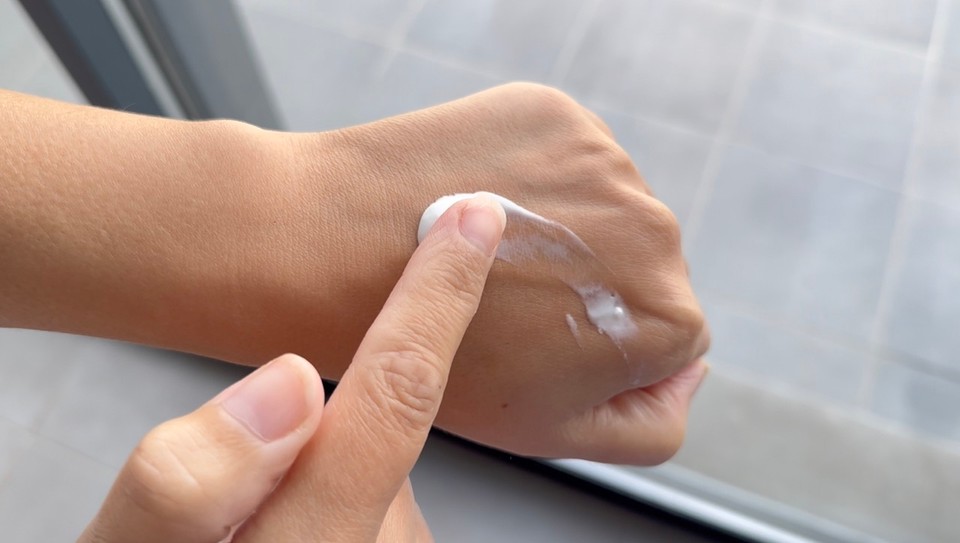Unscented Face Cream
| Phase | Ingredient | Percent (%) | Weight (g) |
|---|---|---|---|
| Phase A | Xanthan gum | 0.3 | 0.3 |
| Glycerin | 4.0 | 4 | |
| Distilled water | 73.5 | 73.5 | |
| Allantoin | 0.4 | 0.4 | |
| Phase B | Murumuru butter | 2.6 | 2.6 |
| Prickly pear oil | 8.0 | 8 | |
| Methyl Glucose Sesquistearate | 4.0 | 4 | |
| Cetyl alcohol | 1.0 | 1 | |
| Phase C | Squalane | 1.4 | 1.4 |
| Calendula extract | 2.0 | 2 | |
| Licorice extract | 2.0 | 2 | |
| Preservative Cosgard (INCI - Benzyl Alcohol, Dehydroacetic Acid, Aqua) | 0.8 | 0.8 |
This formula is for a face moisturizer. It is not a thick, heavy cream, yet not a very light texture cream. It is unscented and is suitable for mixed skin types. If you're looking for an oil-free face cream for oily skin, check out this oil-free face cream formula.
You can find some alternatives to adjust the formula to your ingredients. If you want to read more about the basics of making a cream/lotion, please check this post about how to make a basic cream and lotions.
This face cream is not too dense nor too thin. It is a perfect consistency for the autumn time. It is unscented, which makes it suitable for sensitive or irritated skin. As with every cosmetic product, you should make a patch test before using, and if you have a skin condition, you should ask your medical staff about any ingredient you use in your skincare.
You can help support my website and channel through the “buy me a coffee” page.
Here is the link: https://www.buymeacoffee.com/diycosmetica
Your support helps me keep sharing here more information and more formulas.

Phase A in this formula contains a slurry from gum and glycerin. The gum helps stabilize the product and adds a little body to the final product.
I also added allantoin, an excellent addition to almost any skincare product (a natural compound found in various plants, such as comfrey, and can also be synthesized). Allantoin is known for its ability to soothe and reduce skin irritation, redness, and inflammation. Allantoin also has hydrating properties that help the skin retain moisture.
If you don't have allantoin, you can replace it with glycerin.

Phase B is the oil phase. In phase B, I used Murumuru butter (derived from the seeds of the murumuru palm tree), which is rich in fatty acids, particularly lauric and myristic acids, which provide intense moisturization to the skin. It creates a protective shield on the skin's surface, which is advantageous for retaining moisture and especially beneficial for individuals with dry or sensitive skin. Murumuru butter has a creamy, smooth texture that helps to achieve a texture that is easy to apply to the skin.
If you can't find Murumuru butter, you can make this formula using shea butter instead.

Next, in phase B, I used Prickly pear oil (also known as cactus seed oil or Barbary fig oil). This oil contains essential fatty acids (particularly linoleic acid) and antioxidants (including vitamin E).
Prickly pear oil can help to reduce the appearance of dark spots and hyperpigmentation.
If you can't find Prickly pear oil, you can use Argan or Jojoba oil instead.
I have used Methyl Glucose Sesquistearate (derived from sugar and stearic acid) for an emulsifying wax. This emulsifying wax is known for its moisturizing capabilities. Methyl Glucose Sesquistearate can create a protective barrier on the skin, effectively sealing in moisture and leaving the skin soft and hydrated.
Methyl Glucose Sesquistearate creates less tackiness or stickiness creams. It makes a very soft and easy-to-apply texture. You can use Polawax NF (Cetearyl Alcohol (and) Polysorbate 60) instead.
To add to the smooth and silky texture, I also added cetyl alcohol. Cetyl alcohol functions as an emollient, effectively hydrating the skin and also helps to stabilize the overall formulation.
I combined some active ingredients in phase C: Liquorice extract with calendula extract, and Niacinamide and Squalane.
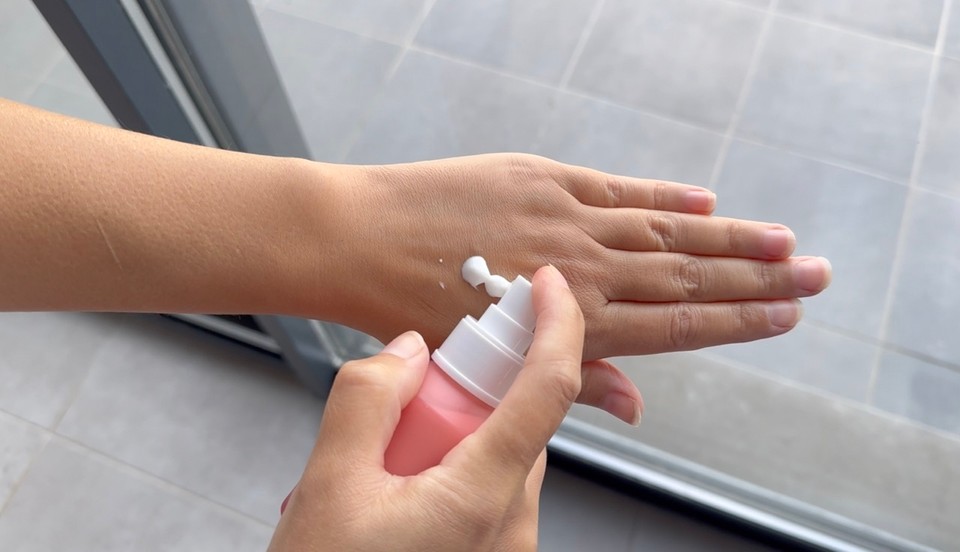
Liquorice extract is known for its ability to help reduce the appearance of dark spots, hyperpigmentation, and uneven skin tone. It contains compounds like glabridin and liquiritin, which can inhibit melanin production. Licorice extract is also rich in antioxidants and has anti-inflammatory properties.
Calendula extract has soothing and anti-inflammatory properties and contains antioxidants, such as flavonoids and carotenoids, which help protect the skin from free radical damage.
You can swap these extracts with others, such as Green tea extract, Cucumber extract, Mulberry extract or Bearberry extract.
In phase C, I also added Squalane (I use a plant-derived Squalane derived from various sources, including plants like olives, sugarcane, and rice bran). It serves as an exceptionally potent moisturizer, offering deep hydration to the skin. Its lightweight, non-greasy nature ensures effective nourishment and moisturization.
You can use Jojoba oil instead.
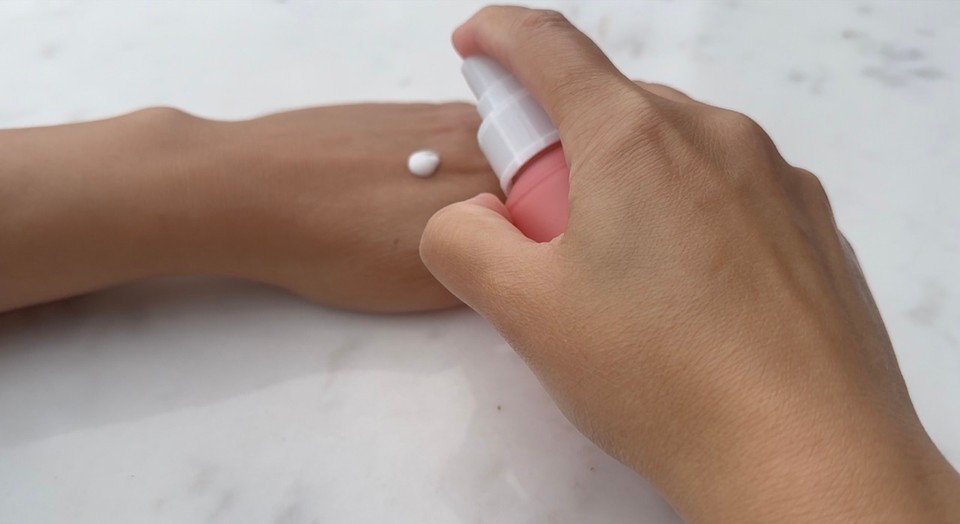
Another active ingredient in phase C is Niacinamide, known as vitamin B3. Niacinamide is a humectant that can help reduce the appearance of dark spots. It has anti-inflammatory properties that can soothe and calm irritated or sensitive skin.
Lastly, in phase C, I added the preservative. If you use a different preservative, please use it according to the supplier's instructions. If you need to use a higher percentage, you can subtract from the distilled water to balance the formula.
Use the calculator to adjust the amount you wish to make.
Method:
- In a heat-resistant beaker, add the water phase ingredients. Start with the gum and glycerin. Make a slurry by combining the glycerin and the gum, then add the distilled water and the allantoin.

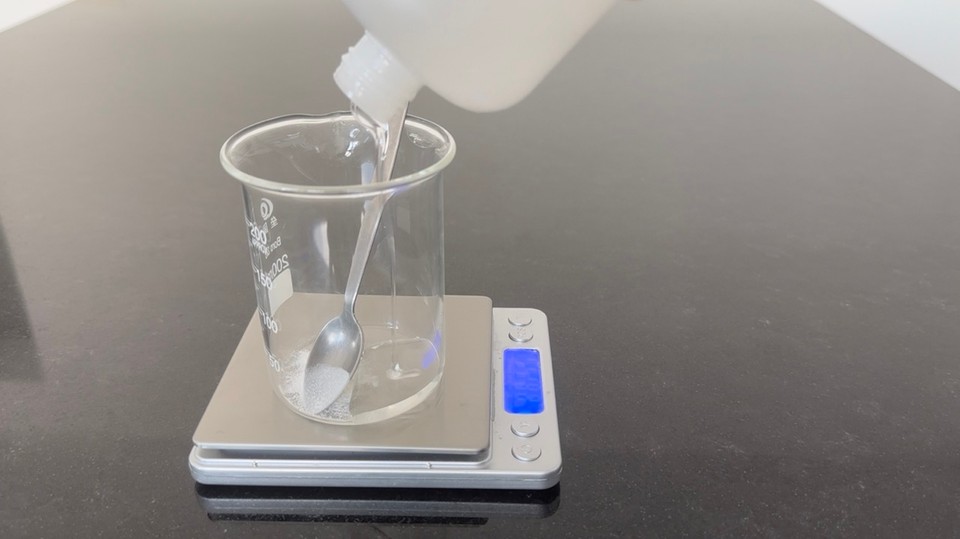
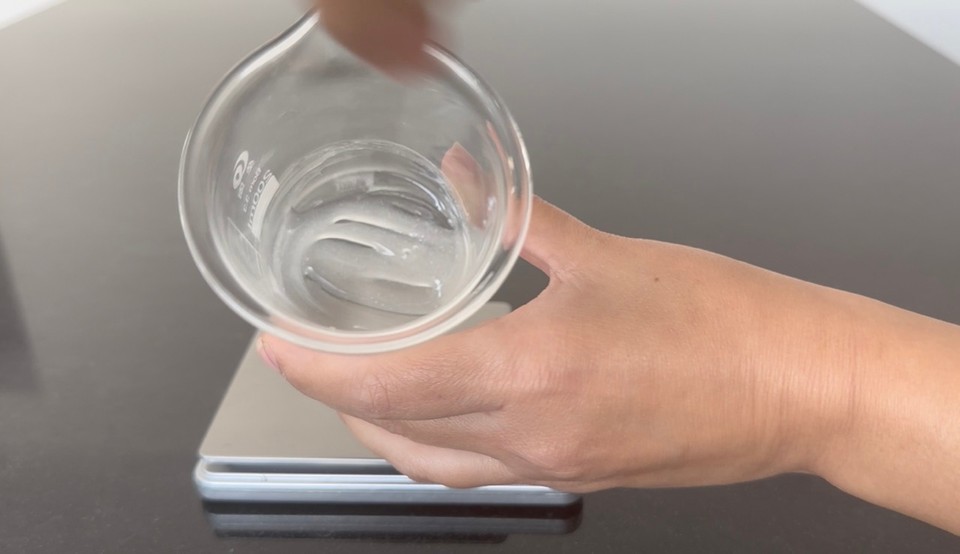

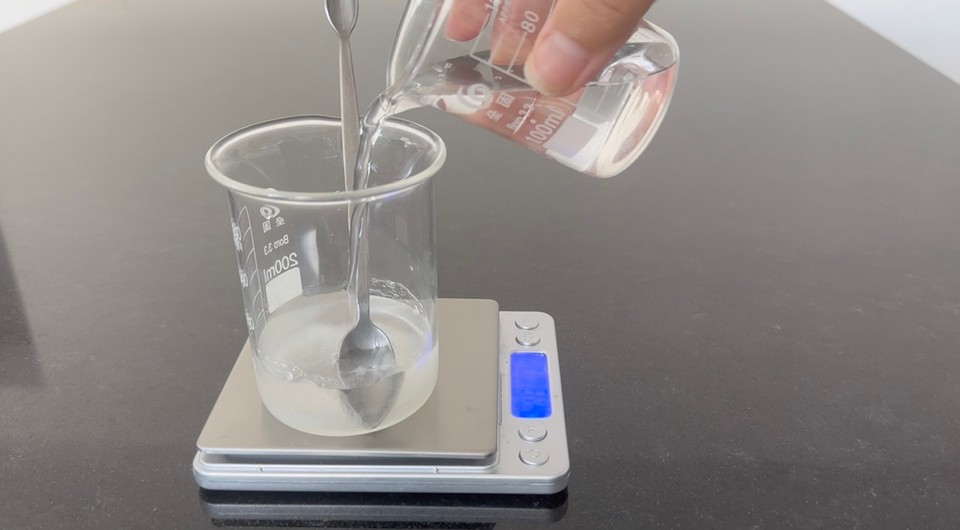
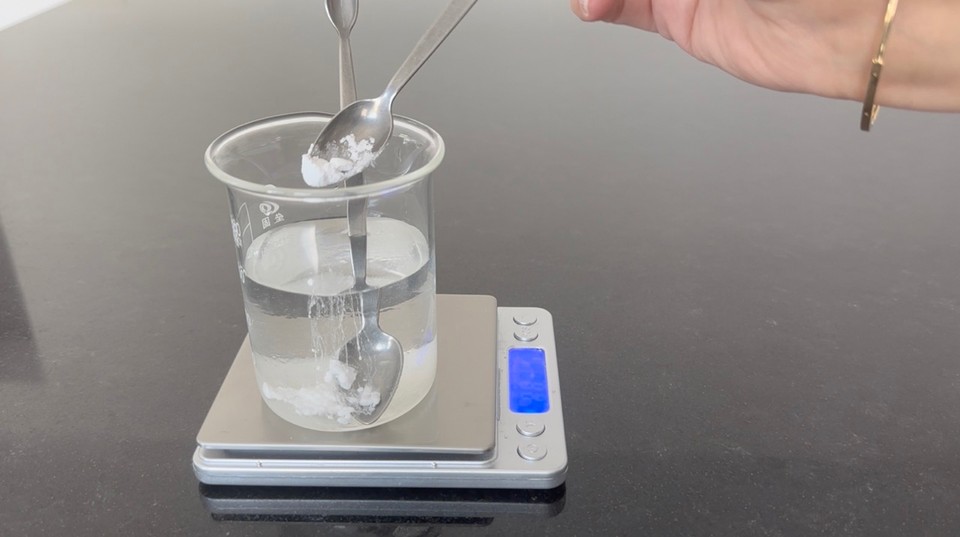
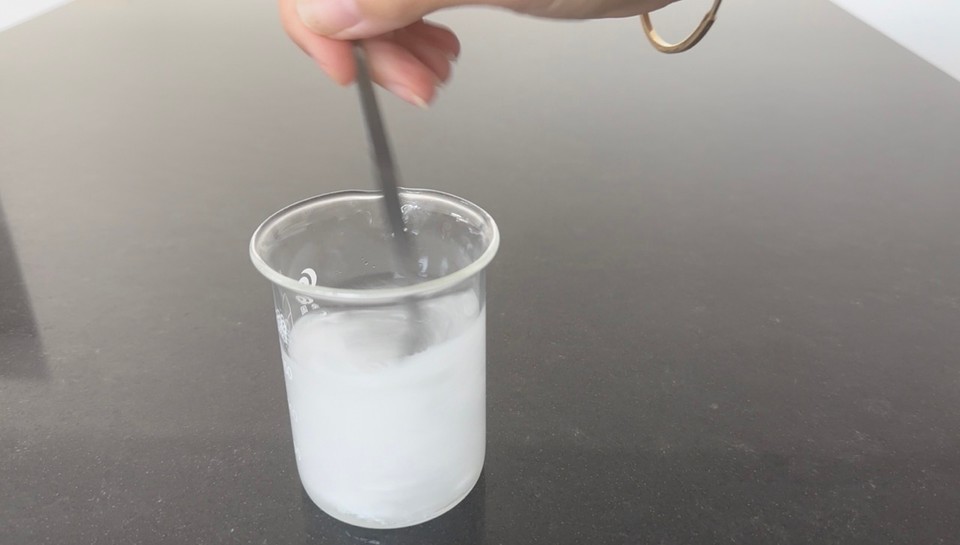
- In another heat-resistant beaker, add the oil phase ingredients.
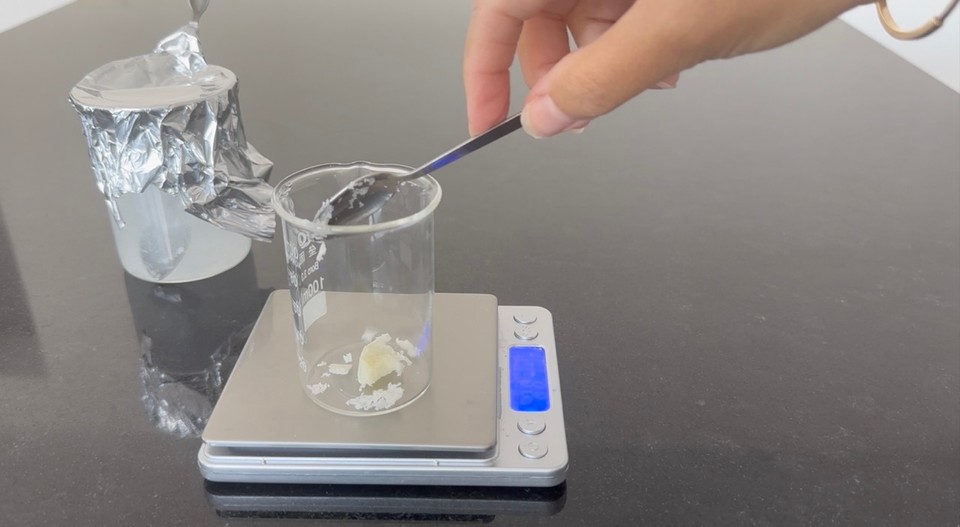
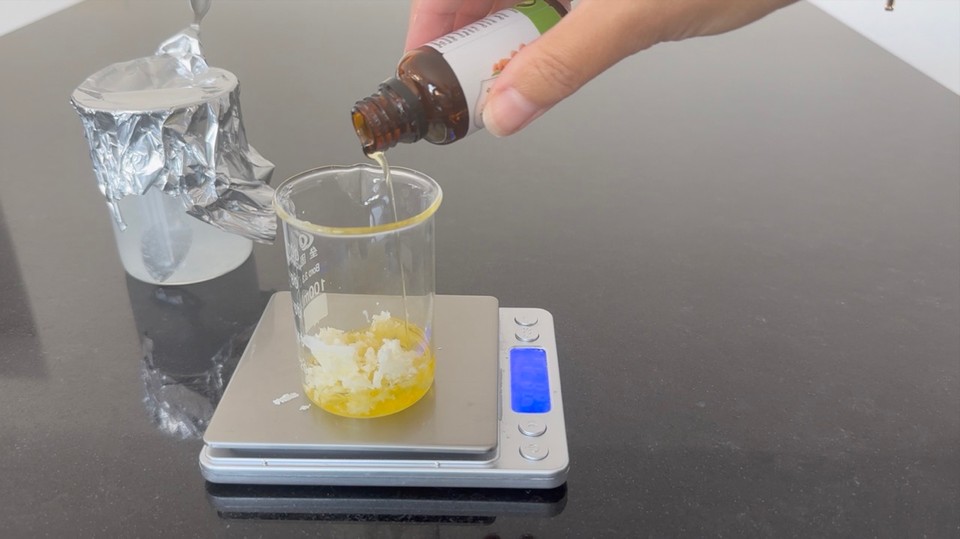
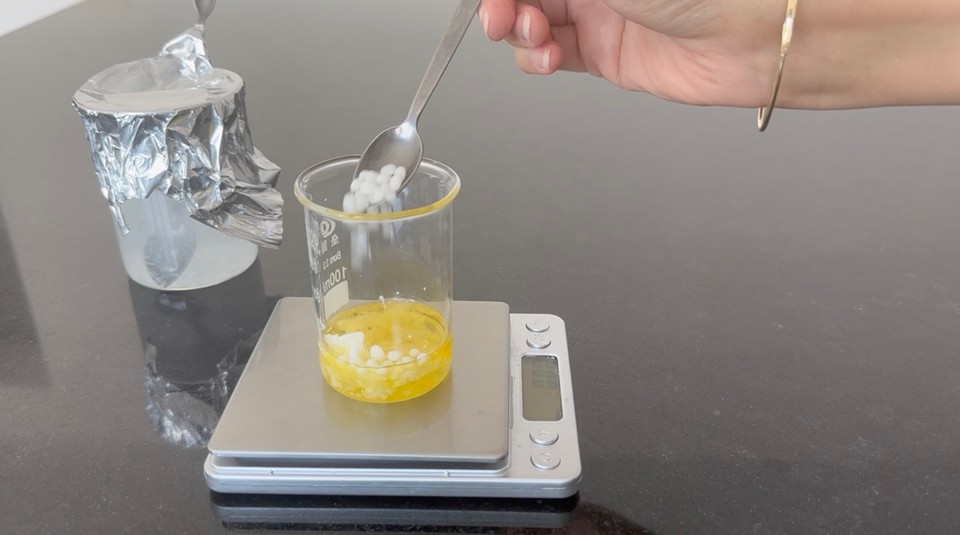
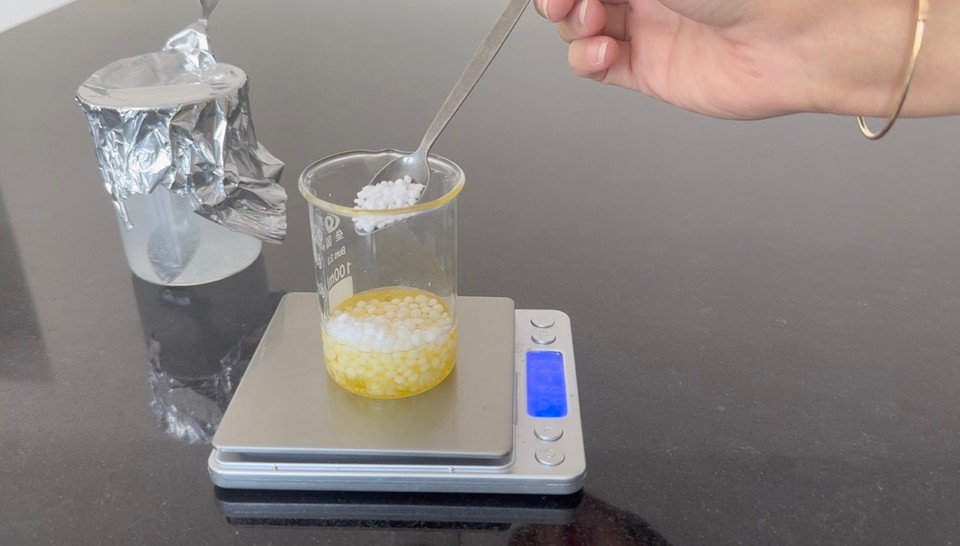
- Place the oil and water phases into a double boiler on medium heat to melt the oil phase. Cover the water phase beaker with aluminum foil to minimize water evaporation. (when working with bigger batches, you should scale your water phase before heating and after removing it from the heat. Calculate the water evaporated during the heating and add the missing amount to the water phase beaker).
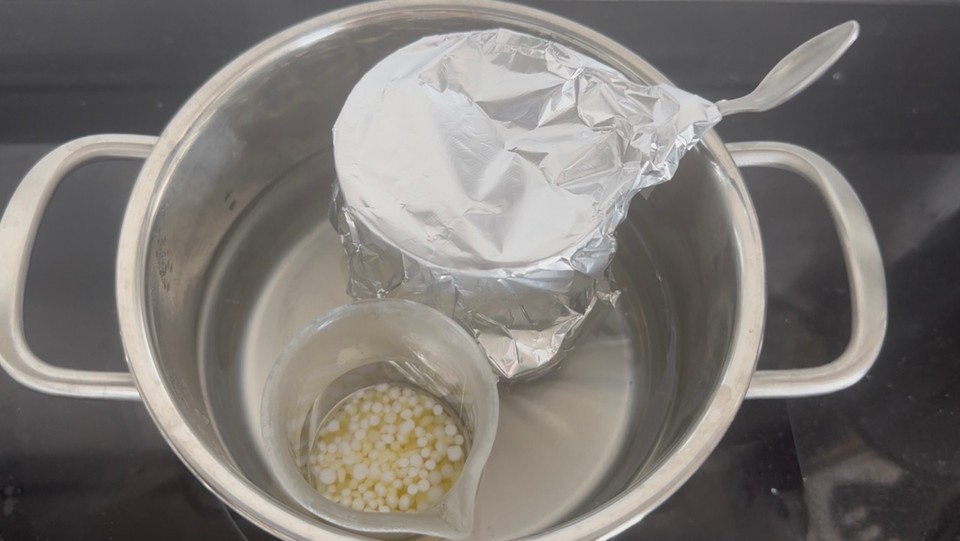
- Prepare phase C in a different container and set it aside.
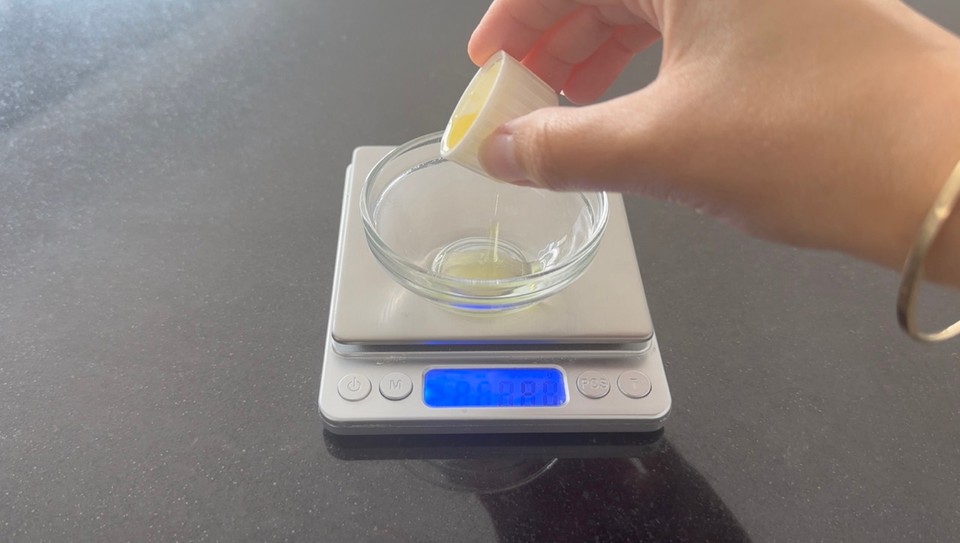
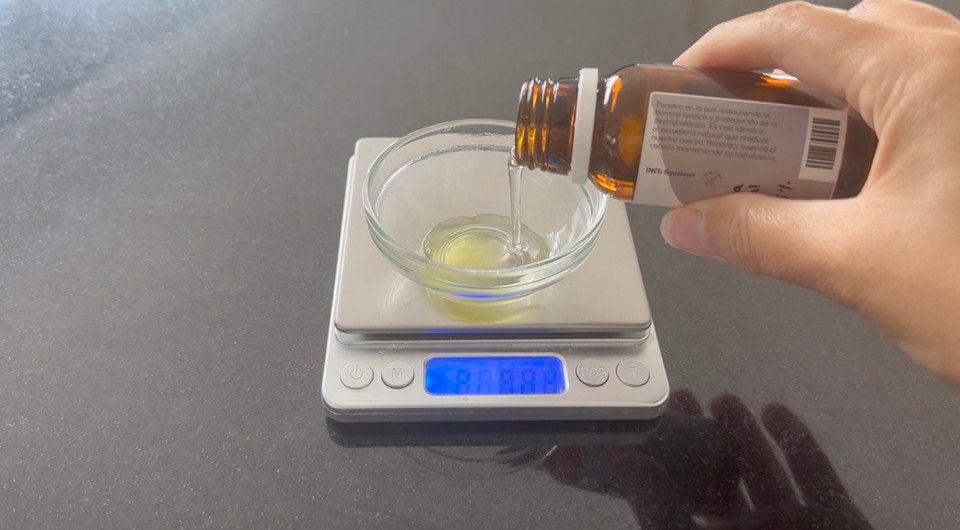
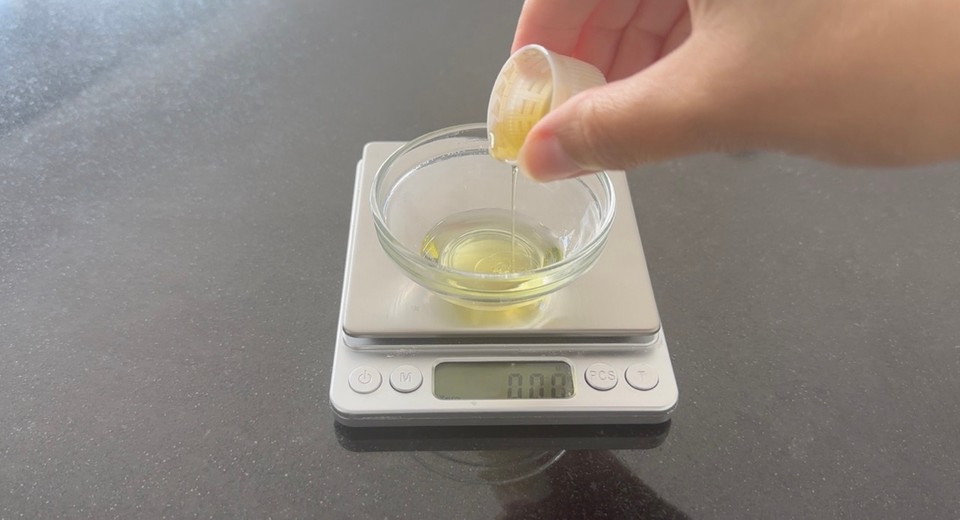
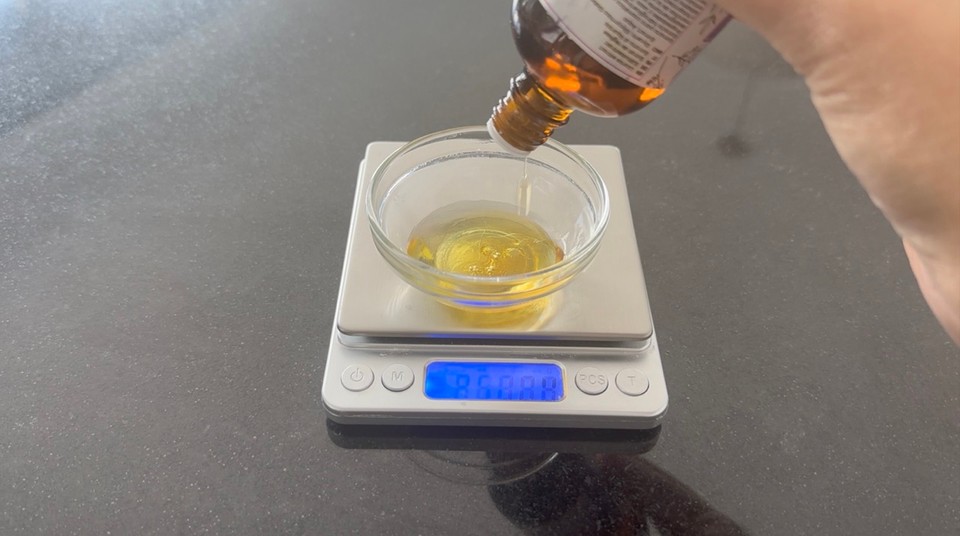
- Remove phases A and B from the heat. Combine phases A and B. Use a high-speed immersion blender for 3-4 minutes to combine a stable emulsion.
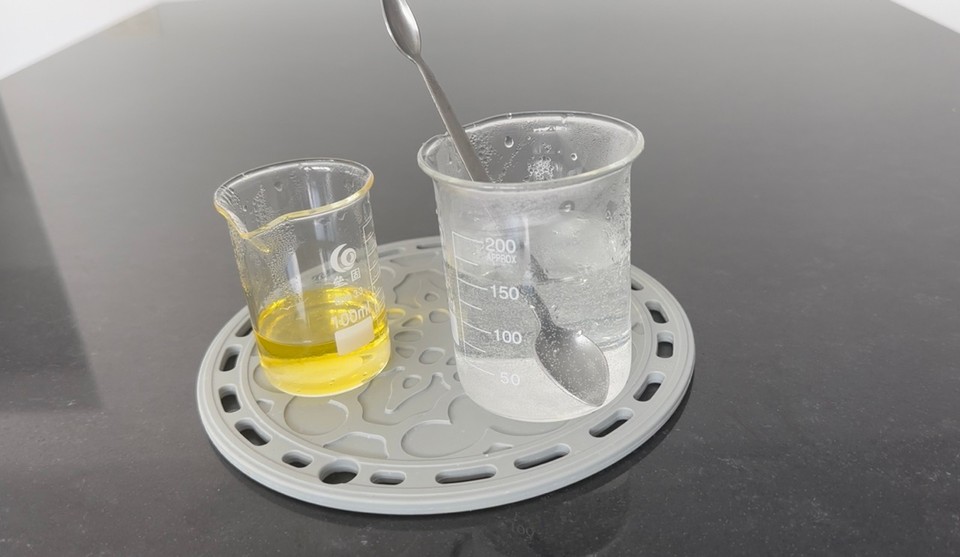


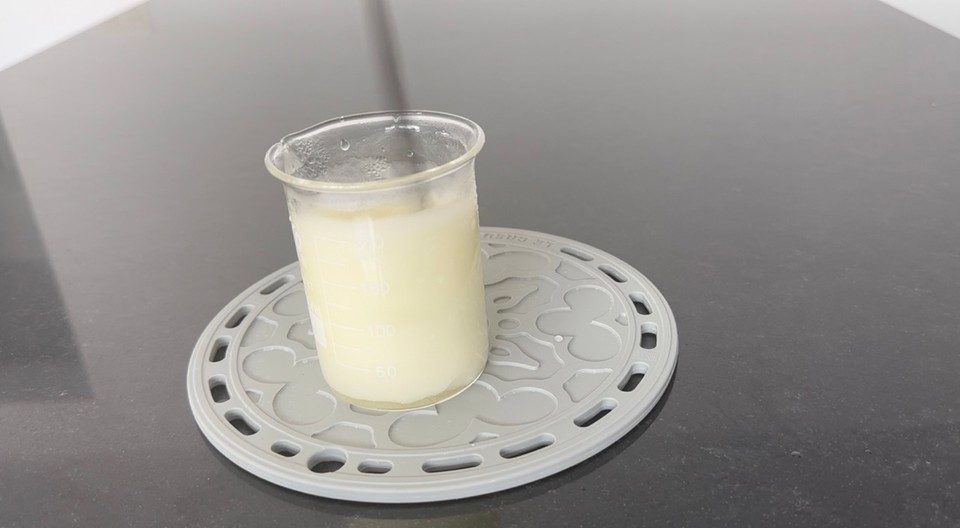


- When the emulsion cools to less than 40 degrees Celsius, add phase C and mix well to combine.

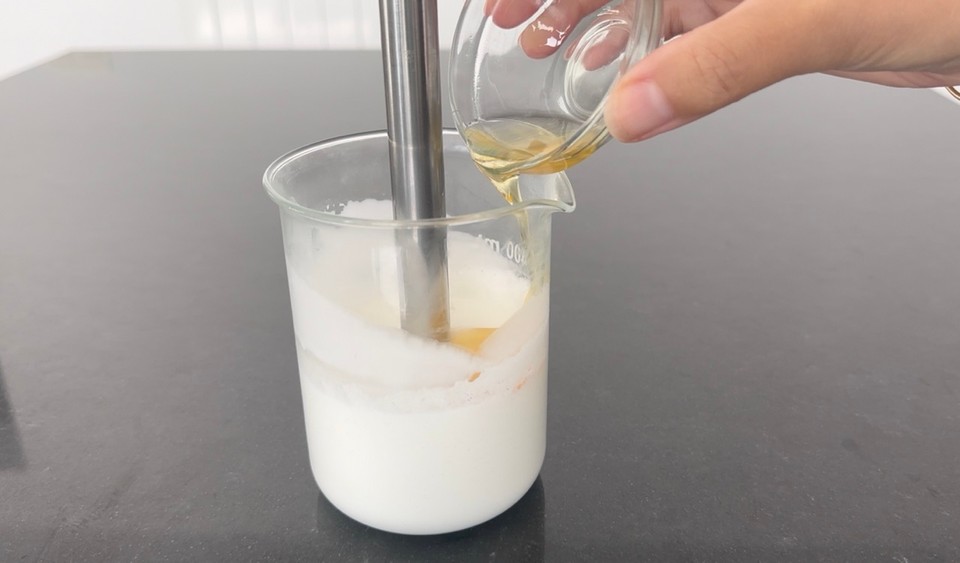

- Check PH level and adjust if necessary. To read more about PH adjustments in cosmetics, check this post. PH between 5 and 6 is fine. I added 3 drops of lactic acid 80% to lower the PH to be 5.5.

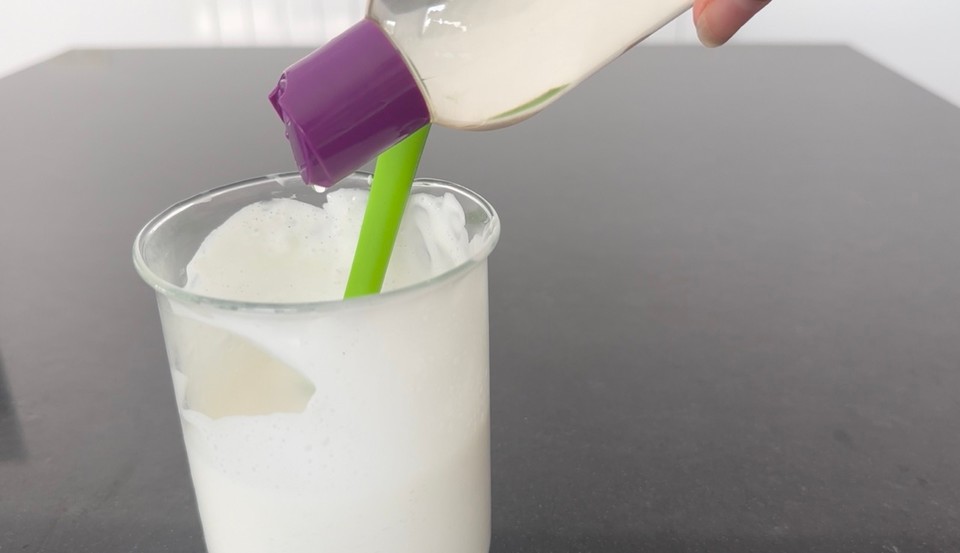
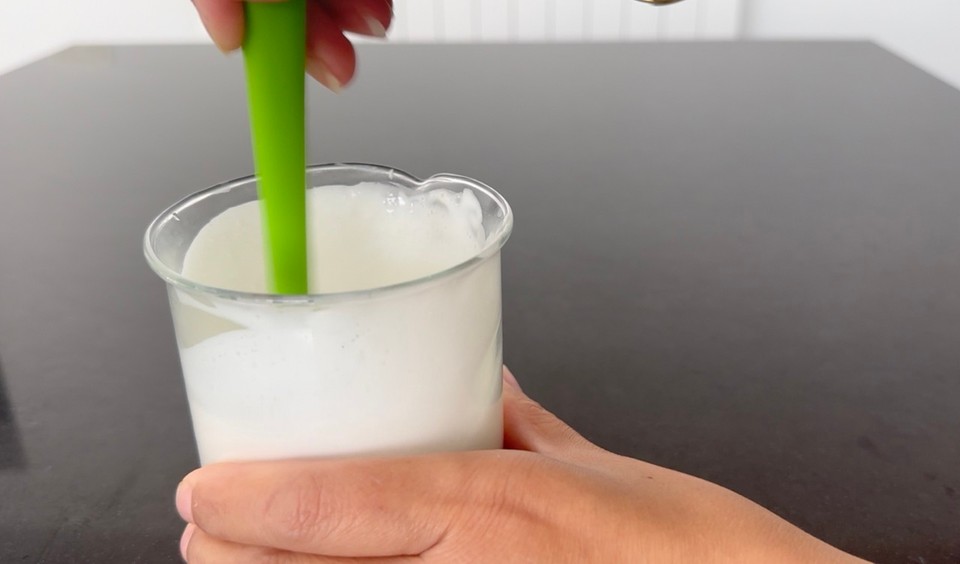
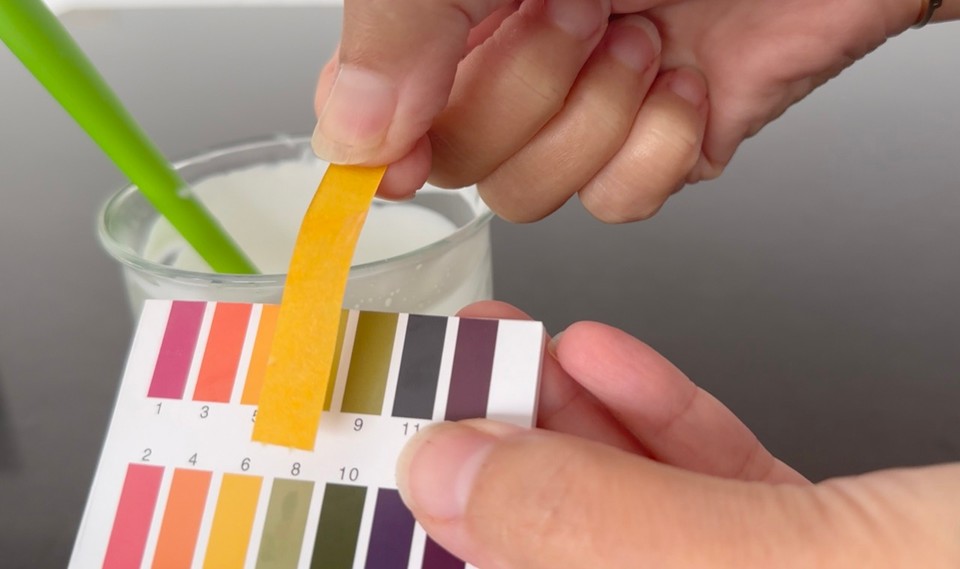
- Pour into the container of choice.

